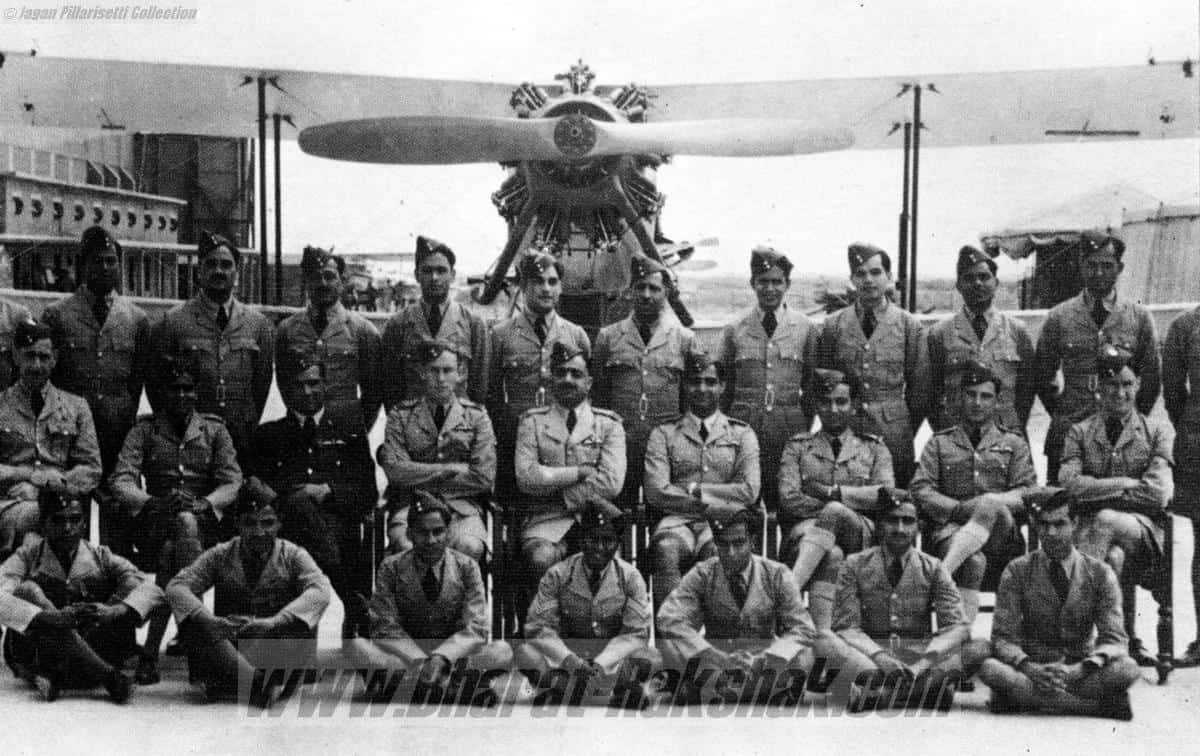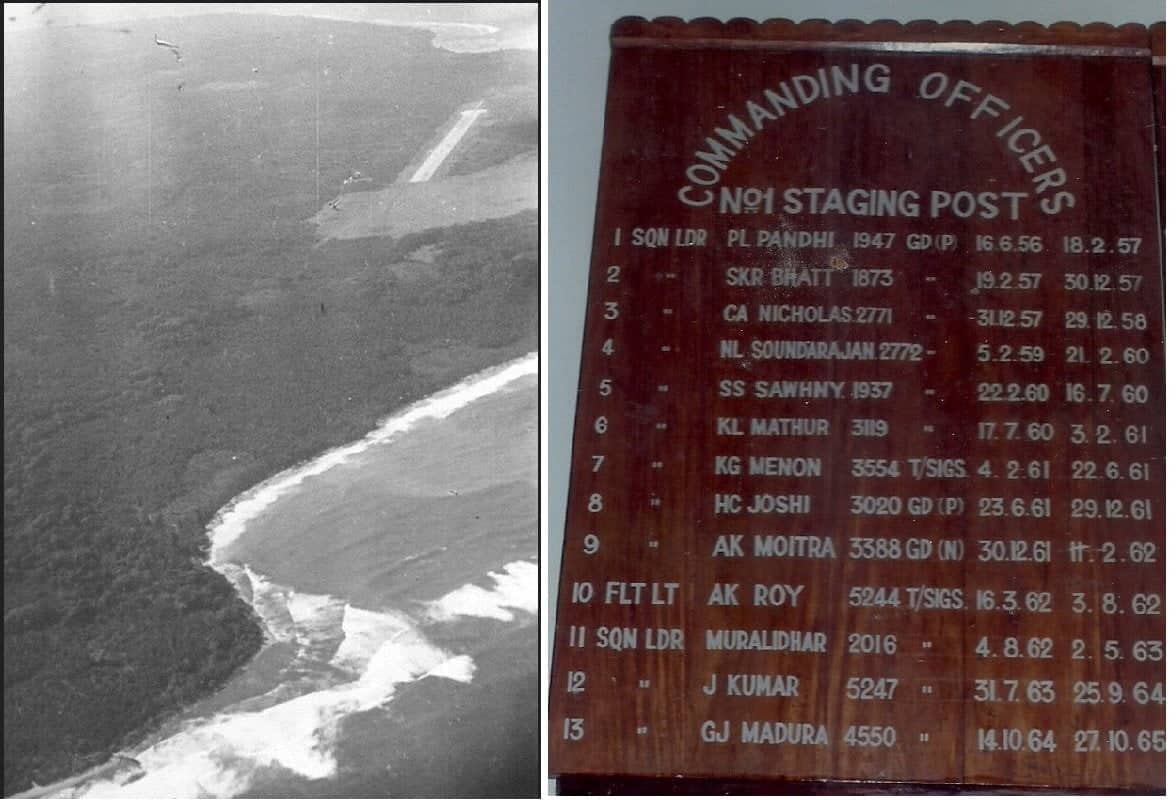In our conversation about the IAF’s accidental helicopter fleet, there was a term that might have flown under the radar – ancillary units. To close this loop, we’re taking a deep dive into this aspect of the IAF, the whole story behind the 100-series numbering system and how these “ancillary aces” support the IAF’s mission.
Coastal Defence Flights
The concept of ancillary units in the Indian Air Force has its roots in World War II when war threatened India’s borders. The Chatfield Committee, anticipating conflict, recommended establishing non-regular coastal defence flights (CDFs) for India’s protection. These flights, numbered 1 to 5, were planned for Madras, Bombay, Calcutta, Karachi, and Cochin.

The CDFs primarily used outdated aircraft like Wapitis, Audaxes, and Blenheims, which had been accumulated from existing RAF and IAF units in the country. They were manned by RAF personnel and the newly formed Indian Air Force Volunteer Reserve (IAFVR), a concept similar to the modern-day Territorial Army. The units received funding separate from the regular IAF budget, reflecting their temporary nature.
To avoid confusion with existing IAF and RAF squadrons, these CDFs were renumbered to the 100-series in April 1942. This was because IAF squadrons numbered 1-4 were already established, and plans called for ten total squadrons. Similarly, the RAF had overlapping numbered squadrons in India as well. The renumbering scheme assigned “101 Flt/Sqn” to the former 1 CDF, “102 Flt/Sqn” to 2 CDF, and so on. A further distinction was made by adding the unit’s role after the number. For example, a Photo Reconnaissance unit became “100-series PR Flt/Sqn.”

However, the CDFs’ story was short-lived. By November 1942, they were disbanded, with their personnel and aircraft absorbed into the regular IAF squadrons. Although the CDFs themselves were dissolved, the concept of using the 100-series for ancillary units had been planted.
A fascinating post-WWII document from the National Archives offers a window into the world of the Air Force’s “ancillary units.” While their duties may never be fully captured comprehensively, this document provides valuable archetypes that portray their typical or likely roles.

Post-Independence hustle!
In 1946, the Air Forces in India had an approved strength of 20 regular squadrons, ten each of the IAF and the RAF. Following independence in 1947, the Indian Air Force faced a critical situation. With the departure of RAF squadrons, India was left with just ten authorised squadrons, significantly under-strength. The Kashmir War of 1947-48 further exposed the need for immediate expansion.
While discussions for a formal increase in squadron strength were underway, the approval process was slow. In a stroke of ingenuity, the government granted the IAF an informal go-ahead to raise additional squadrons, with formal sanction to follow. Enter the previously shelved concept of the 100-series units. Recognising their potential, the IAF decided to revive them for these “informally approved” units.

Let the raisings begin
The revival of the 100-series proved beneficial for the IAF’s expanding fleet of ancillary units throughout the 1950s and beyond. Importantly, the 100-series designation wasn’t tied to a specific aircraft type. These units could operate trainers, fighters, bombers, transporters, or even helicopters if their role fell under the “ancillary” category. Not all ancilliary units carried a number, but if they did, it was the 100-series.
On Jan 15th, 1948, 101 Flight was reborn (named 101 PR Flight) as a photo reconnaissance unit at Palam. This wasn’t a truly “ancillary” unit, as the role of PR was meant to be given to a regular squadron but was raised as such, awaiting formal sanction. Staffed with personnel and equipment drawn from existing units, 101 PR Flight comprised four Harvards, two Spitfires and eight pilots. Reflecting its permanent status, the unit was redesignated as 101 Squadron on April 1st, 1950, becoming a regular IAF Squadron.

While 101 Squadron charted a course towards permanence, the 100-series designation continued to serve its original purpose – identifying dedicated ancillary units with specialised roles. 1951 saw the formation of the 102 Survey Flight, a vital unit tasked with aerial mapping and geographical surveying crucial for land operations. Similarly, 103 Communication Flight, established in 1954, provided airlift support for Governors and senior officials in the Eastern States, ensuring smooth air connectivity in remote areas. Similarly, the 104 Helicopter Flight (HF), formed around the same time, served the Indian Navy aviation needs.
102 Survey Flight C-87 took the famous pictures of Mt. Everest in 1954 and it was the 103 Flight Dakota piloted by its Commanding Officer that was short down by the Nagas in 1959, with the crew remaining in captivity for over a year.

The story of the 105 Helicopter Unit presents a fascinating twist. Initially established in 1957 as the 105 Conversion Training Unit, tasked with training Afghan pilots on Spitfires and Harvards at Kanpur, its existence was short-lived. However, the number 105 didn’t remain vacant for long. With the training unit’s disbandment, the number became available and was reused in November 1959 for the IAF’s second dedicated helicopter unit.
Established in 1957, 106 Strategic Reconnaissance Flight utilised Canberra aircraft modified explicitly for reconnaissance. In December 1959, a decision was made to merge 106 Flight with the existing 102 Survey Flight. This amalgamation resulted in the formation of the 106 Squadron, a regular squadron dedicated to strategic reconnaissance. This merger freed up the 102 number, yet again, for future use. It was not until 1981 that this number was reused – for the induction of the MiG-25!
The trend continued with the formation of the 107 Helicopter Unit in 1960, marking the beginning of a sequence in which almost all numbers from 107 to 159 became associated with helicopter units.
A closer look reveals a unique case within the 100-series: 108 Squadron. Established in 1959, it was initially classified as an ancillary unit utilising the modified Vampire trainer (locally dubbed the PR55 variant) for photo reconnaissance tasks. 108 Squadron, alongside 101 Squadron, eventually transitioned into a mainstream squadron, shedding its initial ancillary role as they phased out the PR55 in 1968.

Summary
In conclusion, the 100-series numbering system within the IAF saw significant use during the 1950s. 101, 102, 106, and 108 Squadrons, which started as ancillary units of the IAF, are now regular squadrons even though they carry the numbering pattern of ancillary units. Barring these four numbers, all numbers between 101 and 159 have been allocated to Helicopter Units.
An intriguing question for the reader: Should the 101 to 106-numbered units claim their heritage from the Coastal Defence Flights of the 1940s? After all, the same numbers were reused to raise these units!
Trivia – What is the name of the current avatar of 103 Flight? Insight, in case you missed it – The Air HQ Communication Squadrons and Command Communication flights are “ancilliary” units!






Leave a Reply